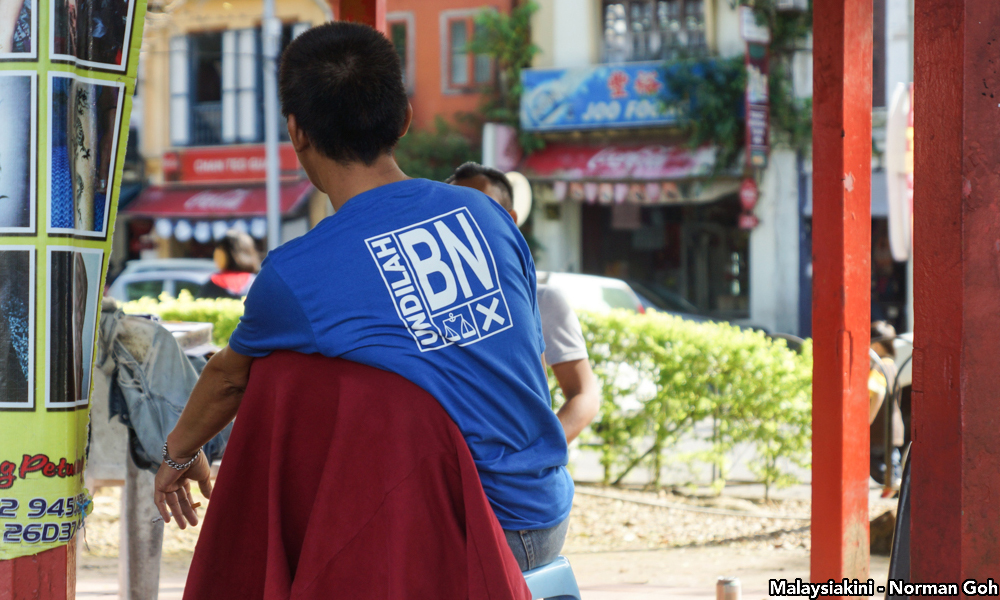MP SPEAKS | It is no secret that the Barisan Nasional (BN) is desperate to win back Selangor at all costs in the forthcoming general election. The reasons are obvious.
Selangor is the richest state in Malaysia by economic output. Many big-ticket infrastructure projects, such as the East Coast Rail Line (ECRL), the High-Speed Rail (HSR), the LRT and MRT projects, water projects and new toll roads, require the approval of the Selangor state government.
Having a well-governed Pakatan Harapan state government on the doorstep of Putrajaya is also a headache for the BN because voters can compare and contrast the performance of the Selangor government with other BN state governments, as well as with the federal government.

What are the chances of the BN recapturing Selangor in GE14? The answer lies partly with the outcome of the expected three-cornered fights that will occur between the BN, Harapan and PAS.
Before I go into the analysis of possible outcomes in three-cornered fights, it is important to understand the nature of voters in Selangor. Voters in Selangor are perhaps the most ‘sophisticated’ in the whole country and because of this, their voting patterns are also the most volatile. Let me illustrate by using the general election results from 1990 onwards.
Figure 1 below shows the level of BN support in states that have been won or are held by the opposition, namely Kedah, Kelantan, Terengganu, Penang, Perak and Selangor, from 1990 to 2013.


BN support in Selangor is the most volatile among all these frontline states. For example, the BN support in Selangor increased from 54.8 percent to 72.4 percent, a massive spike, due to the high economic growth enjoyed by the country during the ‘East Asian’ miracle years from the early 1990s until just before the Asian economic crisis in 1997.
Support for the BN in Selangor fell to 54.8 percent during the 1999 Reformasi elections. It then increased to 62.8 percent in 2004 during the Pak Lah ‘tsunami’, before falling to 43.4 percent in the 2008 BN backlash elections and falling to 38.4 percent in the 2013 general election.

Figure 2 below shows the changes in the level of BN support in these key stations from 1990 to 2013. Figure 2 shows more clearly the level of volatility which Selangor voters exhibit from one election to another.
From 1990 to 1995, BN support increased by 17.7 percent, the highest among all key states. BN support fell by 17.7 percent from 1995 to 1999, also the highest among all key states. From 2004 to 2008, BN support fell by 19.4 percent, the highest among all key states, which led to a change in government in Selangor.


Does the volatility shown by Selangor voters means that the BN can hope to win back Selangor based solely on its performance and leadership? This would be wishful thinking on the part of BN leaders.
One of the main reasons why Selangor voters exhibit such volatility is that they are the fastest to reward good performance and also the fastest to punish bad performance.
They rewarded the BN in 1995 for delivering economic growth and prosperity and they swung against the BN in 1999 because of the economic and political crisis during Reformasi (albeit not by enough for the BN to lose this state then). They swung against the BN in record numbers in 2008 because of dissatisfaction against Pak Lah (photo) due to undelivered election promises.

There is nothing in BN’s track record and leadership which indicates that voters in Selangor will reward it in the next general election, especially when the best the BN can do is to parade out a line-up of three former menteri besars, one of whom was convicted of corruption and another who was found carrying a suitcase full of cash to Australia.
The track record of the Selangor government, while not perfect, has been positively felt by the voters in the state through many of the welfare programmes under the ‘Inisiatif Peduli Rakyat’ umbrella, including free medical cards for low-income families and individuals and free buses in each of the districts/municipalities in the state. Investments and jobs continue to pour into Selangor. The high popularity of Selangor Menteri Besar Azmin Ali stands in stark contrast to that of Prime Minister Najib Abdul Razak.
A large number of the more than two million voters in Selangor are not originally from Selangor. Many of them moved to Selangor because of a better job and educational opportunities. As such, many of them are not attached to any political party, i.e. they are not ‘hard-core’ BN or opposition supporters.

Many of these voters also have better access to information, including social and online media. They are not ‘brainwashed’ by mainstream media. Many of these voters also have higher income and education profiles compared with those in the other states. And the number of newly registered voters is the highest in Selangor, compared to other states.
All these reasons explain why most Selangor voters will vote practically i.e. by rewarding the party or coalition that promises to give them what they want, namely better governance that will keep the streets clean, deliver better welfare programmes, provide properly paved roads and improve the quality of life.
These are also reasons why it is very possible for Pakatan Harapan (PH) to retain most of the seats that were won by Pakatan Rakyat in GE13, even in the case of three-cornered fights.
Soon, in the next part of my statement on this issue, I will provide the evidence.
Part 1: How Harapan can win in Selangor sans PAS
Part 3: S’gor numbers look up for Harapan, PAS’ look bleak
ONG KIAN MING is Serdang MP and head of Penang Institute in Kuala Lumpur.
The views expressed here are those of the author/contributor and do not necessarily represent the views of Malaysiakini.

